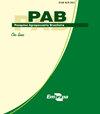Blast disease and wheat production in Brazil
IF 0.7
4区 农林科学
Q3 AGRICULTURE, MULTIDISCIPLINARY
引用次数: 5
Abstract
Abstract This review paper presents the current context of wheat production in Brazil, the management strategies to reduce yield losses due to blast, and the biotechnological approaches to improve wheat resistance. Wheat blast or brusone is caused by the Magnaporthe oryzae Triticum (MoT) pathotype fungus that can infect all the aboveground parts of the plant. The main symptom of the blast disease is spike bleaching that impairs grain production, causing yield losses up to 100% in susceptible wheat cultivars. The first world report of blast in wheat spikes was in Brazil, in 1985, and, currently, the disease is the main constraint to wheat cultivation in tropical and subtropical areas of the Cerrado and Mata Atlântica biomes. For a long time, the use of fungicides has been found to be ineffective under high-pressure disease conditions. However, recent works have pointed out that fungicide efficiency depends on the integration of other control measures, particularly the choice of cultivars with moderate resistance. In this review paper, the high variability of wheat reaction to MoT is presented, as well as a panel of resistant or moderately resistant cultivars (including non-2NS carriers), promptly available for cultivation in regions where blast is endemic.巴西稻瘟病与小麦生产
摘要本文综述了巴西小麦生产现状、减少稻瘟病产量损失的管理策略以及提高小麦抗病性的生物技术途径。小麦稻瘟病是由稻瘟病菌(Magnaporthe oryzae Triticum, MoT)致病型真菌引起的,它可以感染植物的所有地上部分。稻瘟病的主要症状是穗白化,影响粮食生产,使易感小麦品种的产量损失高达100%。1985年在巴西首次报道了小麦穗瘟病,目前,该疾病是塞拉多和Mata atlntica生物群落的热带和亚热带地区小麦种植的主要制约因素。长期以来,人们发现在高压疾病条件下使用杀菌剂是无效的。然而,最近的研究指出,杀菌剂的有效性取决于其他防治措施的综合,特别是选择具有中等抗性的品种。在这篇综述中,介绍了小麦对MoT反应的高度变异性,以及一组抗性或中等抗性的品种(包括非2ns携带者),可迅速用于稻瘟病流行地区的种植。
本文章由计算机程序翻译,如有差异,请以英文原文为准。
求助全文
约1分钟内获得全文
求助全文
来源期刊

Pesquisa Agropecuaria Brasileira
农林科学-农业综合
CiteScore
1.20
自引率
0.00%
发文量
45
审稿时长
9-18 weeks
期刊介绍:
Pesquisa Agropecuária Brasileira – PAB – is issued monthly by Empresa Brasileira de Pesquisa Agropecuária – EMBRAPA, affiliated to Ministry of Agriculture, Livestock and Food Supply. PAB publishes original scientific-technological articles on Plant Physiology, Plant Pathology, Crop Science, Genetics, Soil Science, Food Technology and Animal Science.
Its abbreviated title is Pesq. agropec. bras., and it should be used in bibliographies, footnotes, references and bibliographic strips.
 求助内容:
求助内容: 应助结果提醒方式:
应助结果提醒方式:


